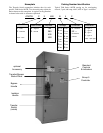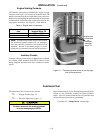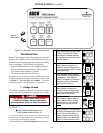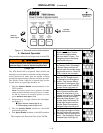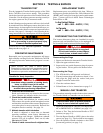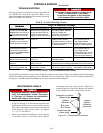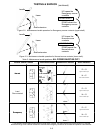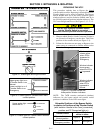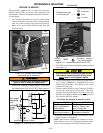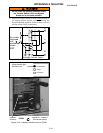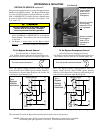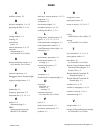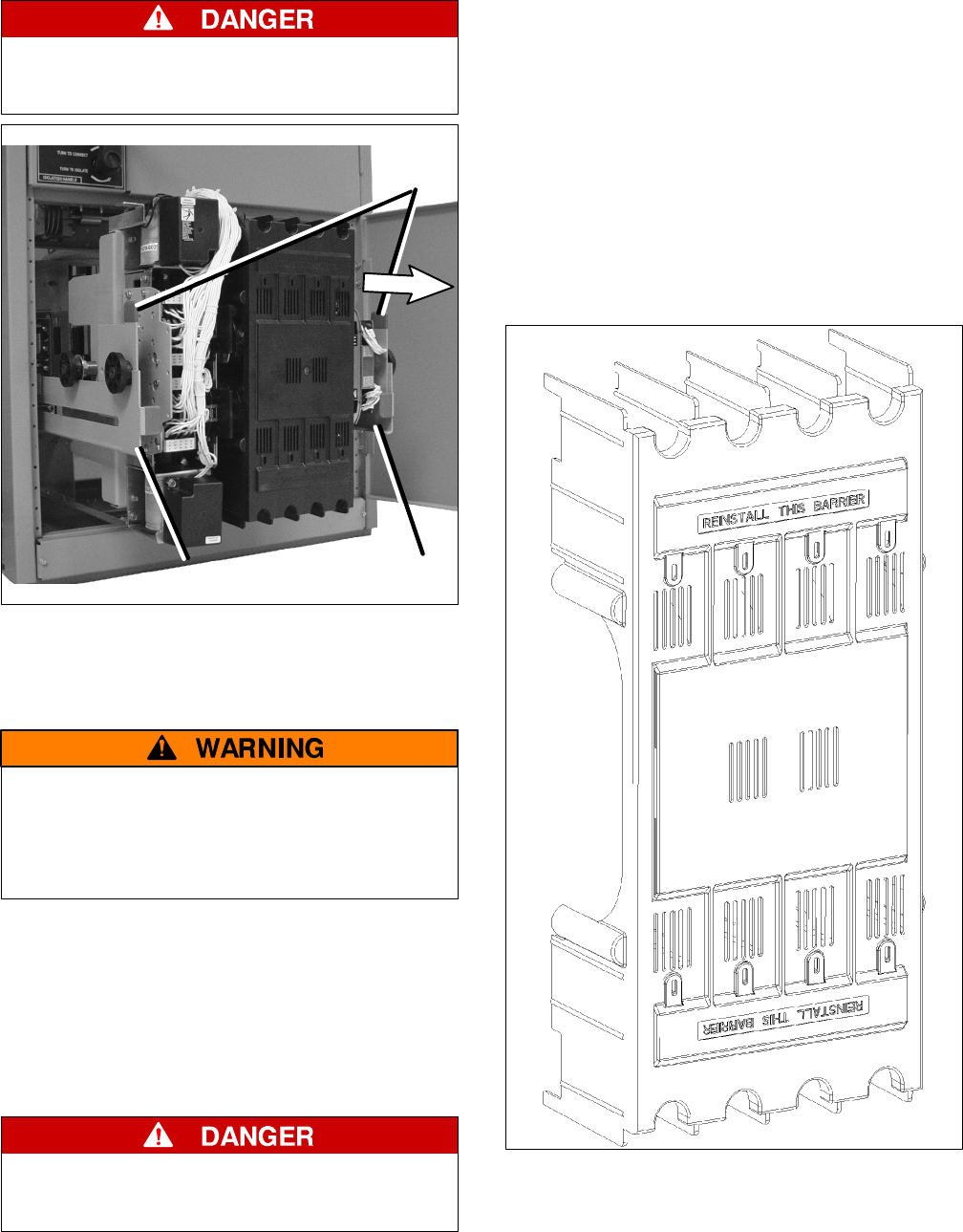
BYPASSING & ISOLATING
(continued)
3 --- 4
4. Open thelower enclosure door.Pull outboth left and
right side rails then use the two tab handlesto rollout
the transfer switch. It can be safely inspected in this
position. The transfer switchcan also be removedfor
easi er maintenance operati ons. See Figure 3–13.
Hazardous voltage capable of causing
electrical shock, burns, or death;
do not touch any control circuit terminals.
right rail
left rail
tab
handles
Figure 3–13.Transfer switch isolated
and pulled out for inspection.
See page 2–2 for maintenance handle use. A lifting yoke
812053 is available to facilitate lifting by using an
overhead crane or similar equipment. See WARNING.
The Transfer Switch weighs about 1 50 lbs.
dependi ng upon t he number of poles. Use lifti n g
devi ce 812053 or other devi ce capable of li ft i ng
this weight to avoid personal injury or equipment
damage. Two persons are recommended.
Contact Inspection
Contact c ondition should be checked annually.
Discoloration is normal. Do not file contacts
because it wastes material. Instead use light emery
paper to clean up the contact surfaces. The
non–replaceable main contacts are designed to last
thelifeofthetransferswitch.
To prevent the possibility of fatal electrical
shocksand burns, bypass, isolate, and withdraw
the transfer switch before working on it.
1. Deenergize transfer switch (pages 3–1 thru 3–4)
Bypass, isolate, and withdraw transfer switch.
Use a voltmeter to verify that no electrical
power is present at the transfer switch terminals.
2. Use the maintenance handle (page 2–2).
Open the contacts that will be inspected by using
the detachable maintenance handle.
3. Remove the barrier (Figure 3–14).
Use a phillip screwdriver to loosen (ccw) four or
six captive round–head screws holding the
barrier to the arc chutes. Then pull the barrier
straight outward to remove it.
4. Reinstall t h e barrier .
Install the barrier over the arc chu tes. Use a
ph illip s screwd river to tigh t en (cw ) the fou r or six
roun d – h ead screws to secure the barrier to t h e arc
chute insulator nuts. See Figure 3–14.
Figure 3–14. Barrier removal.



